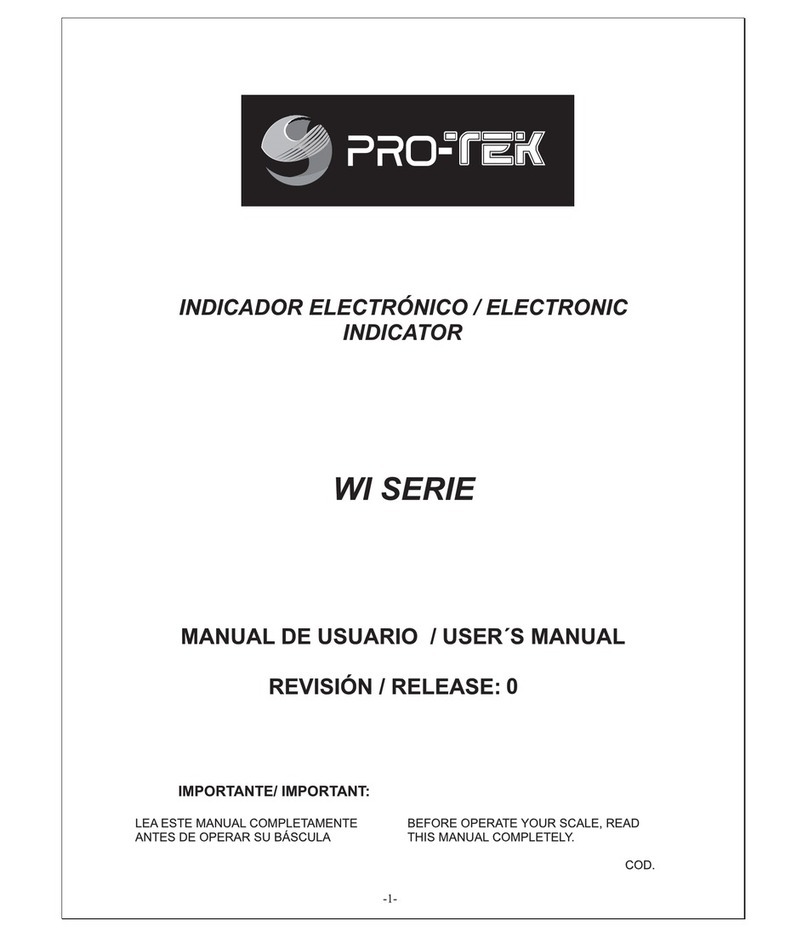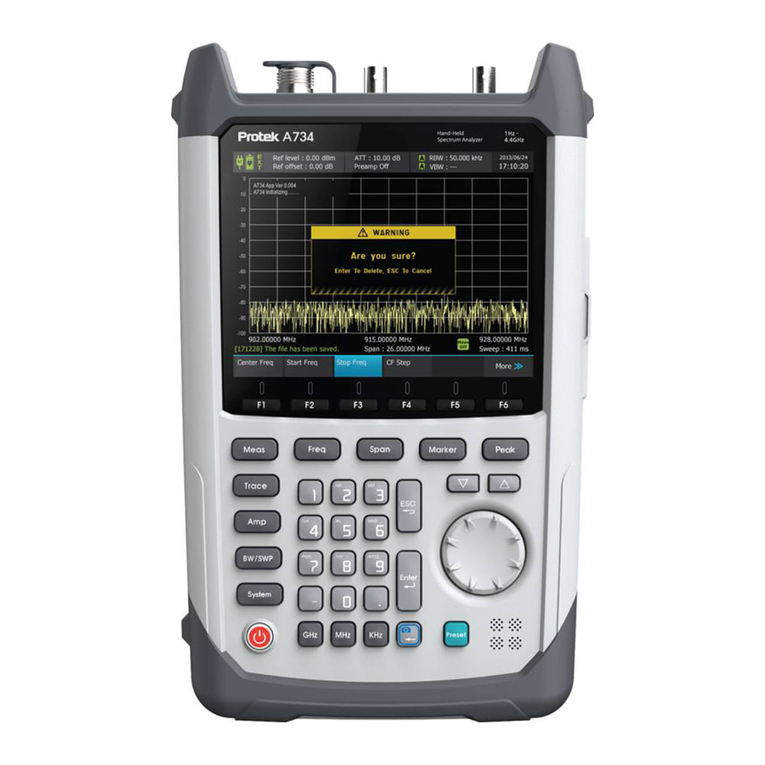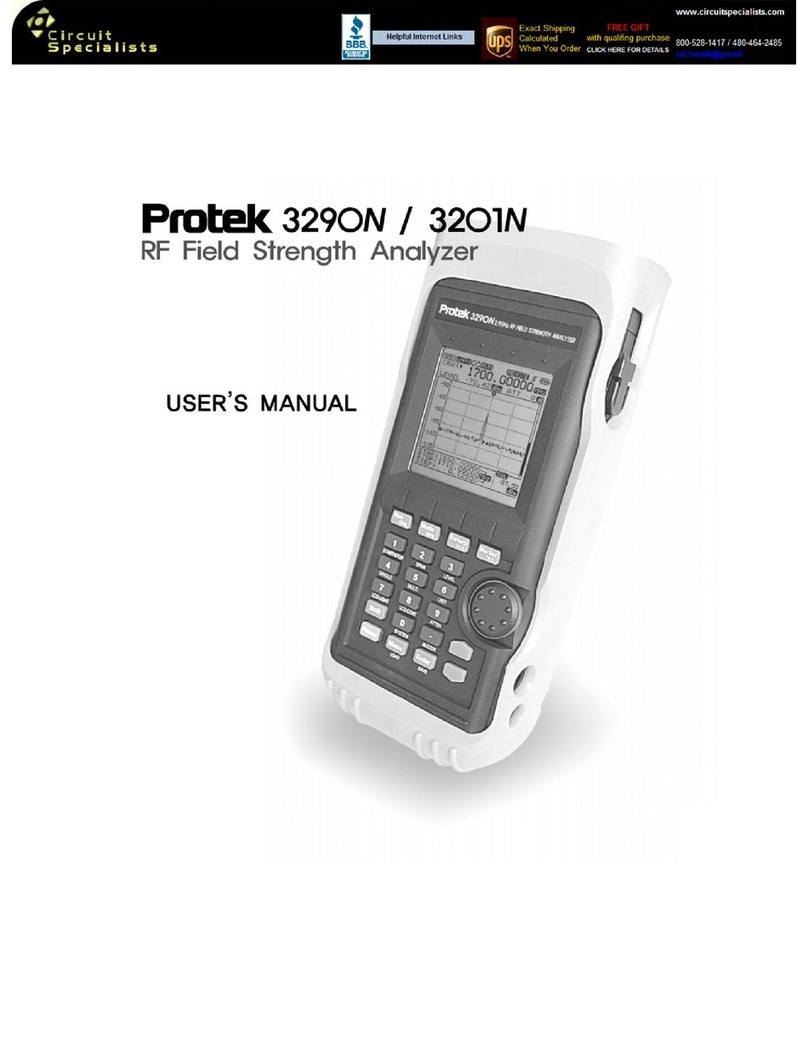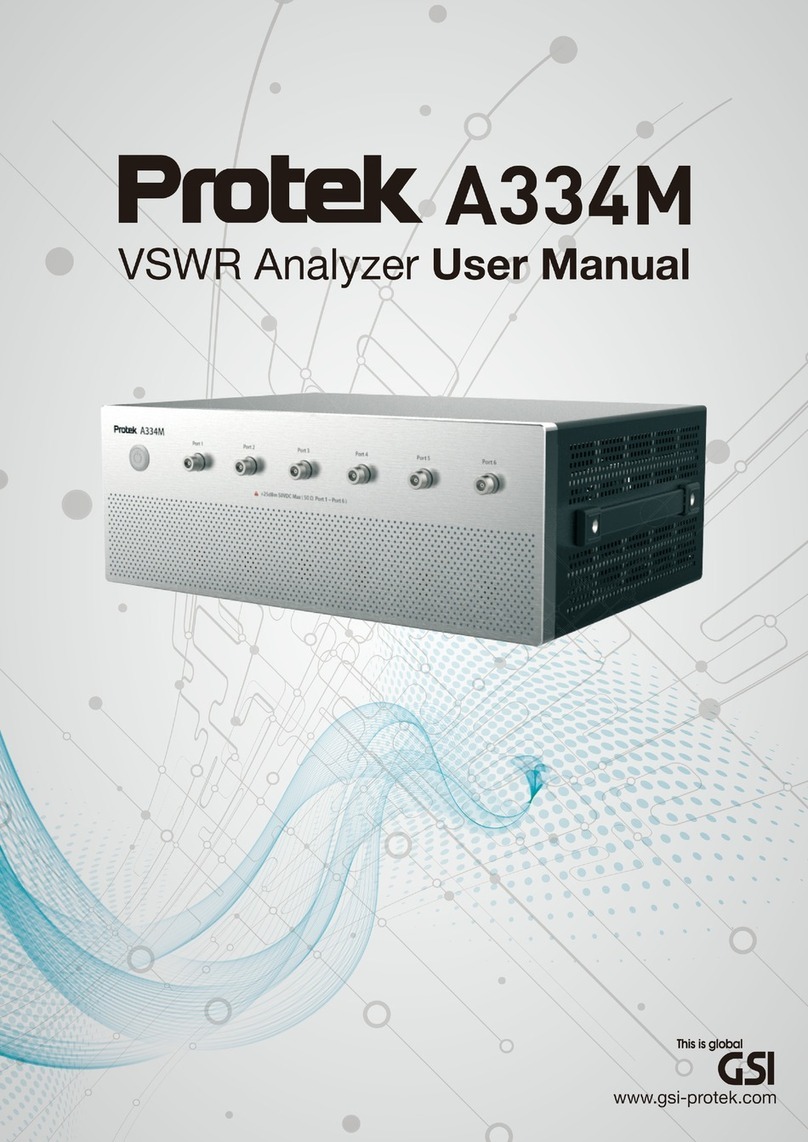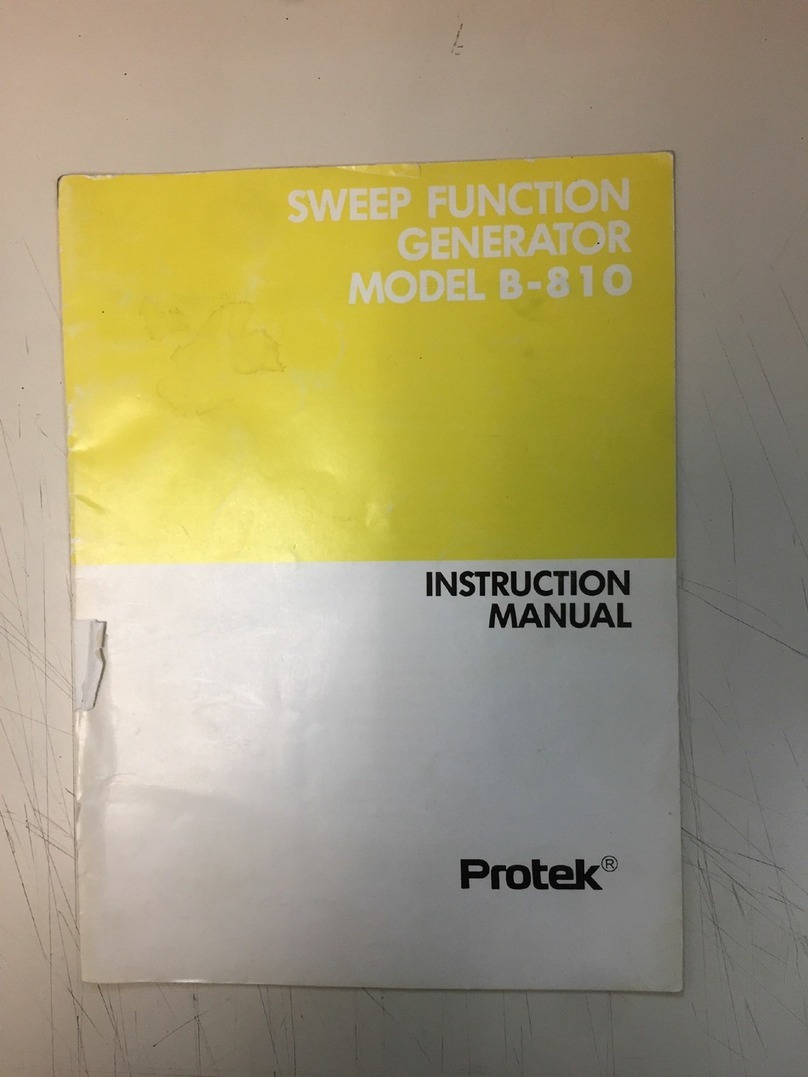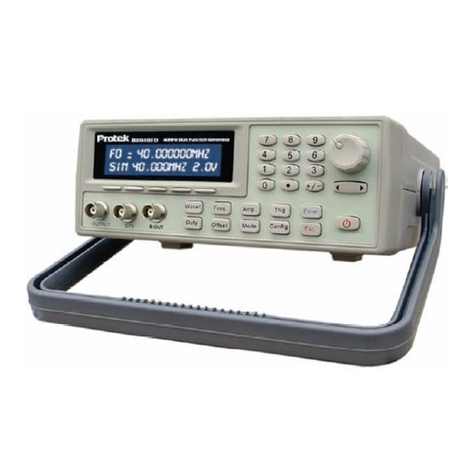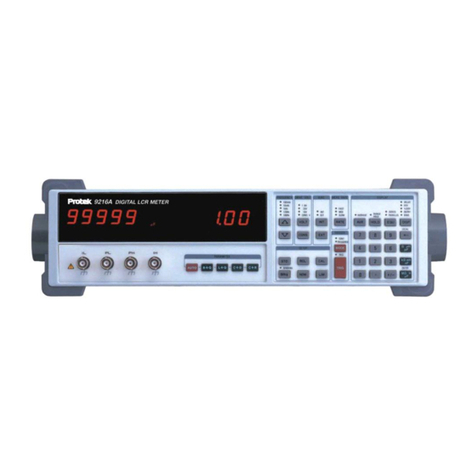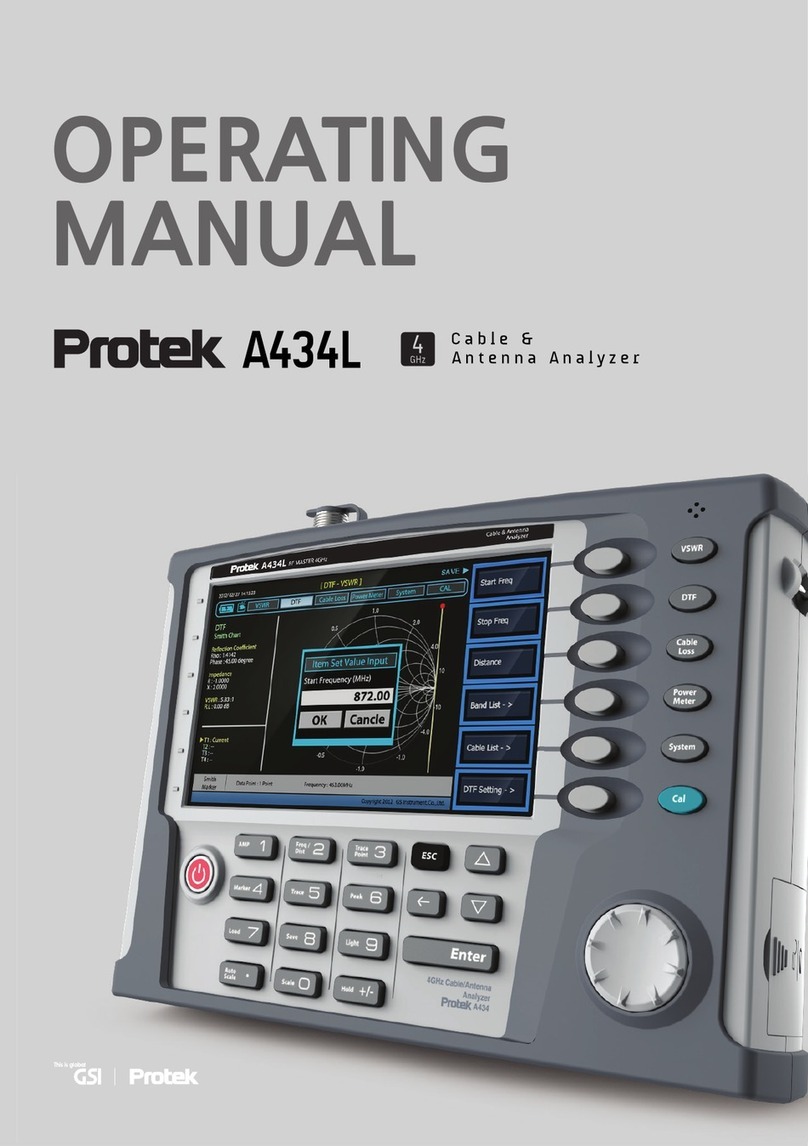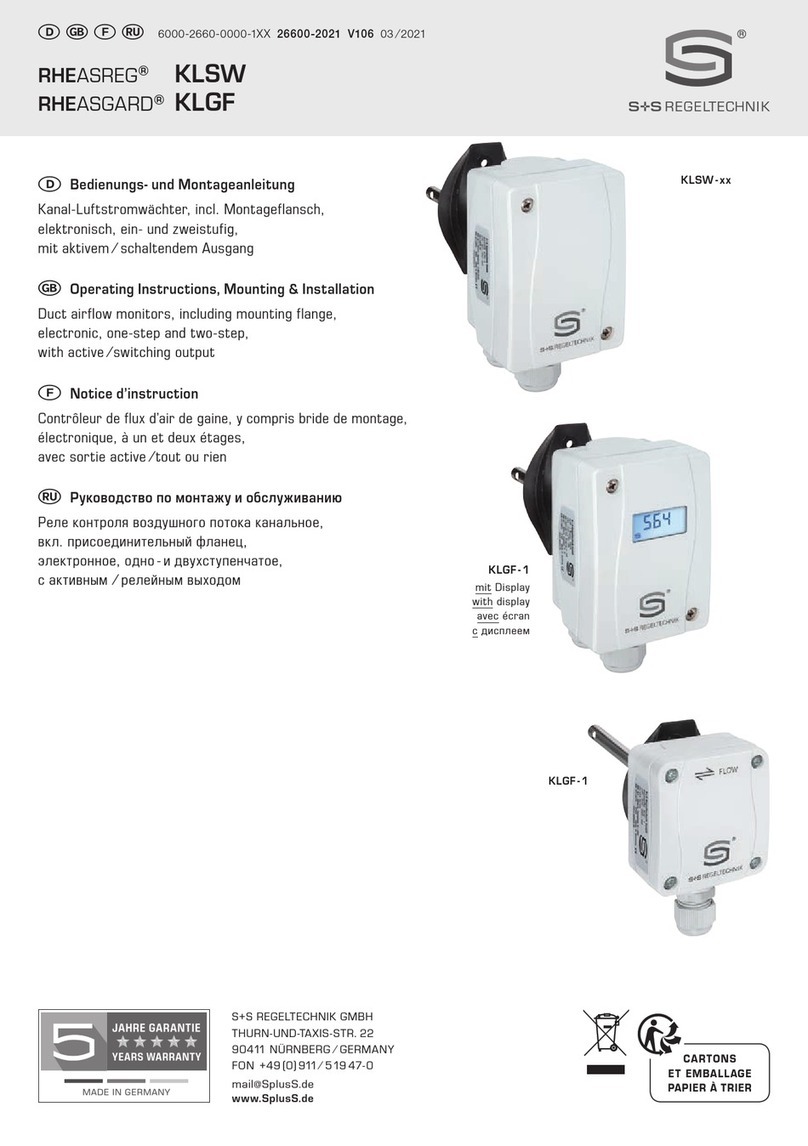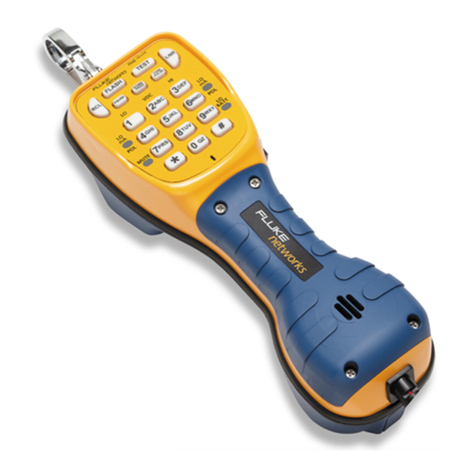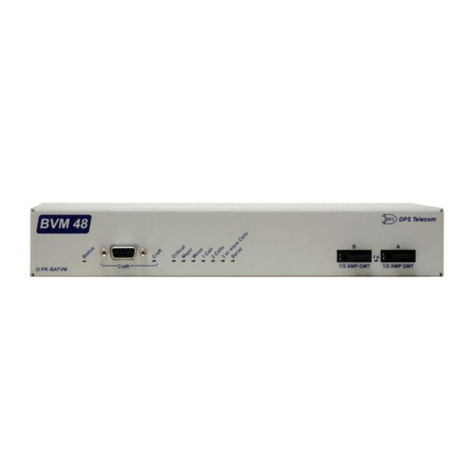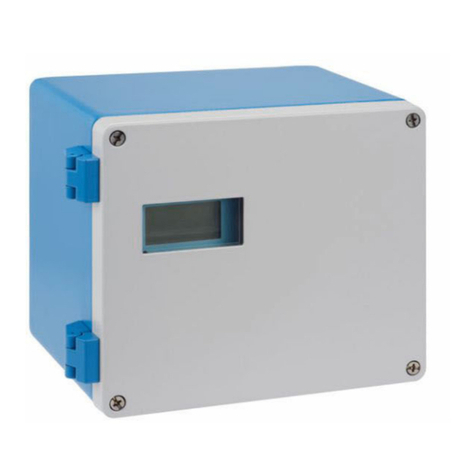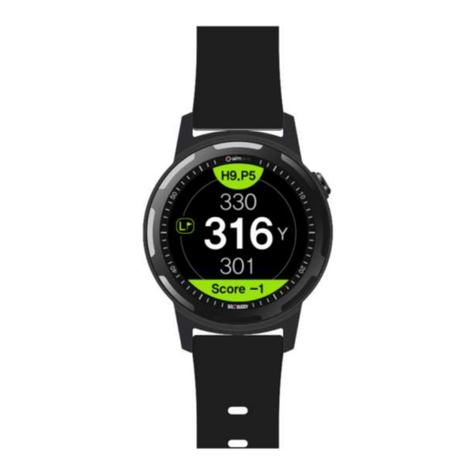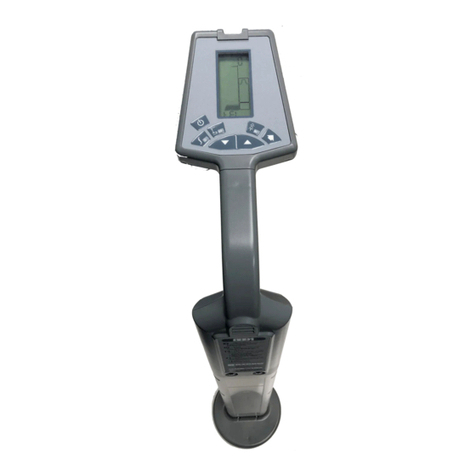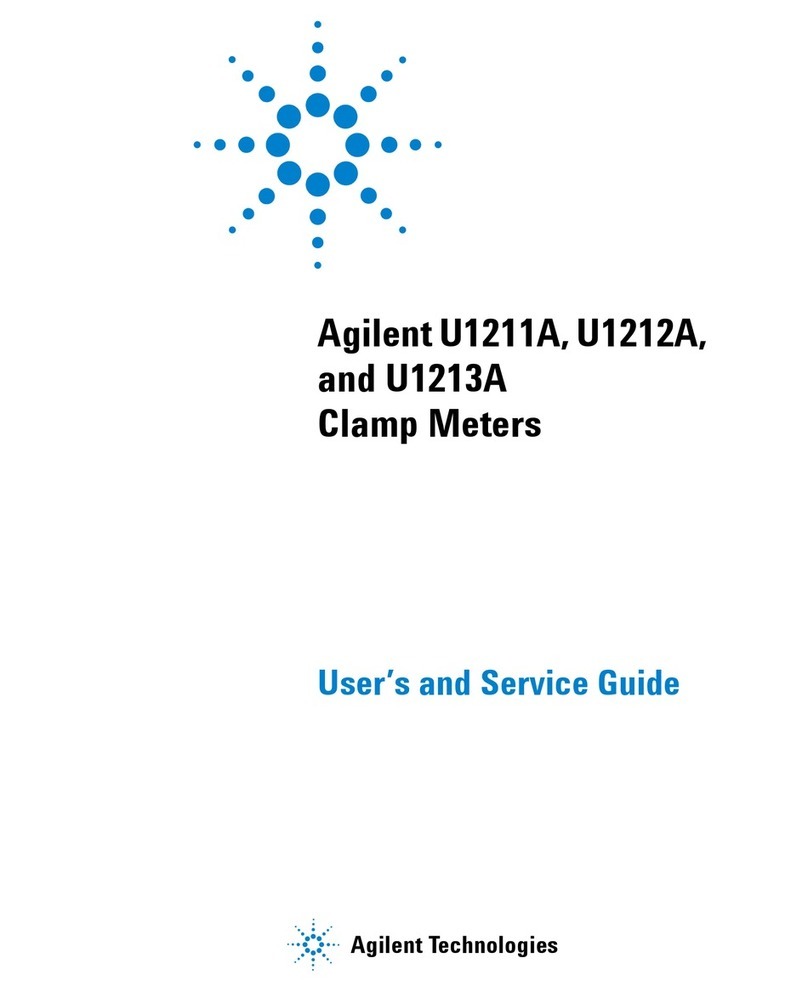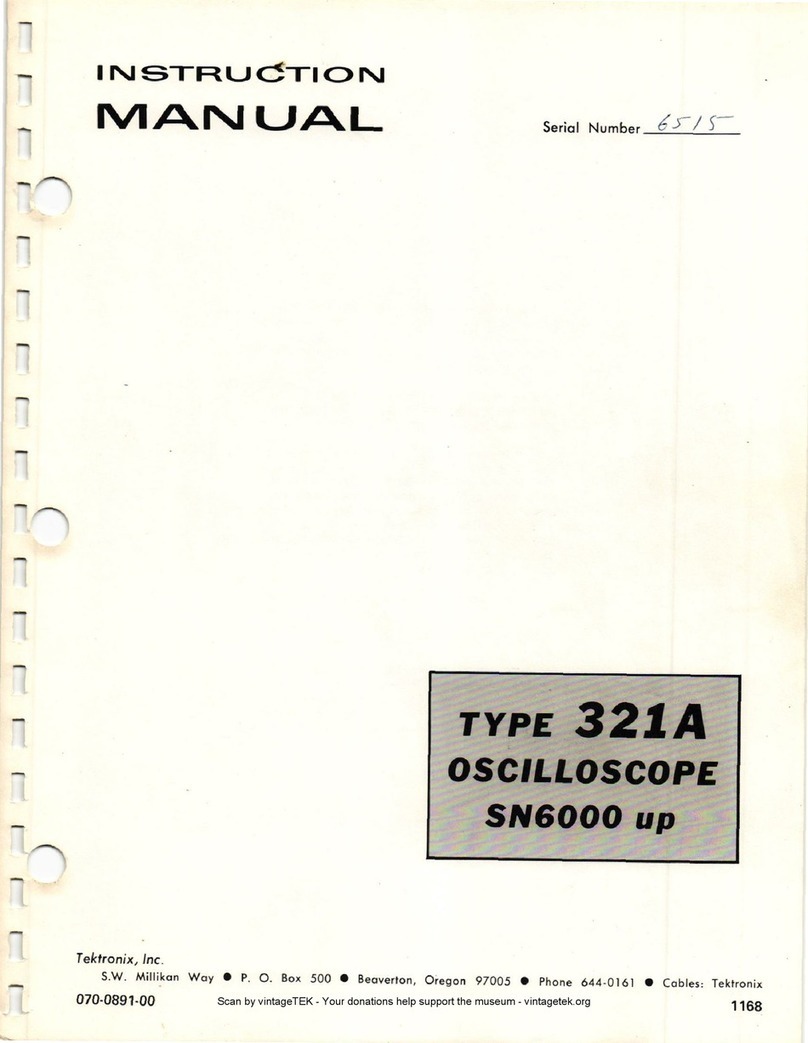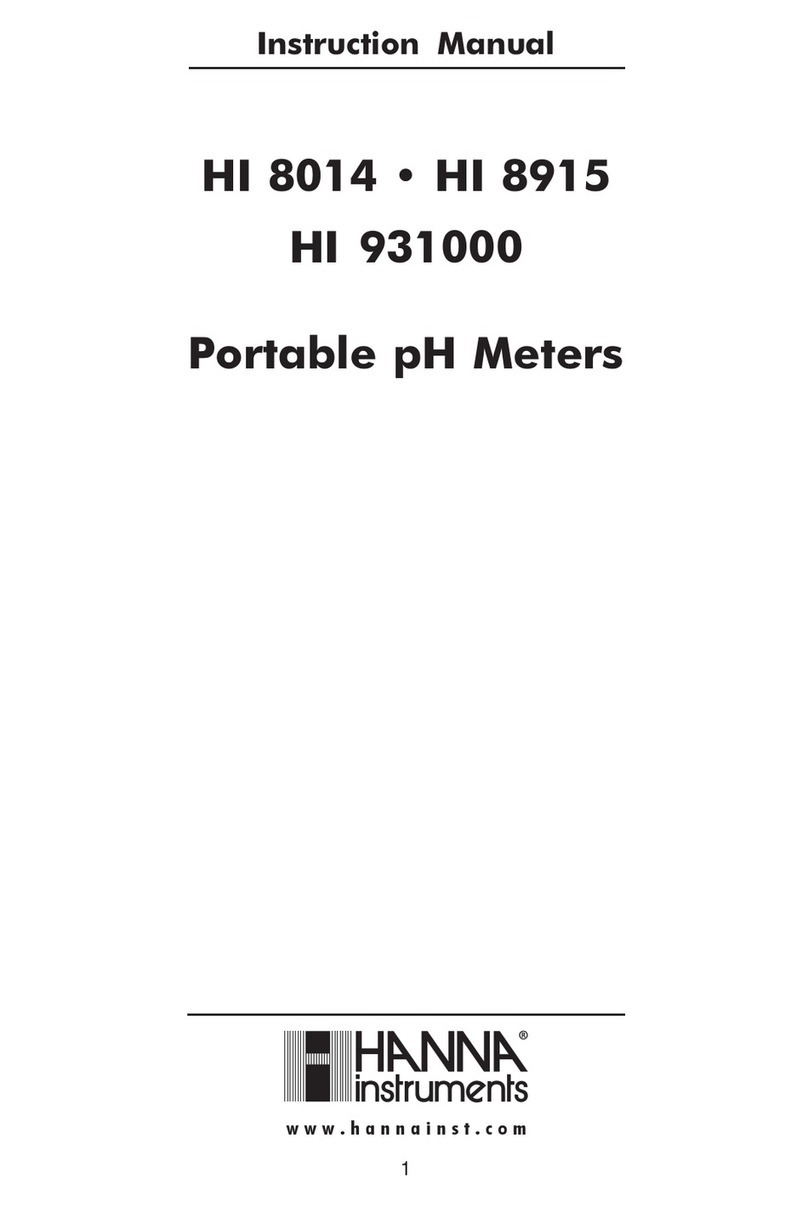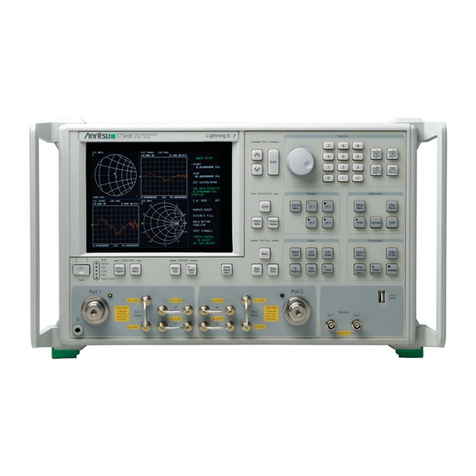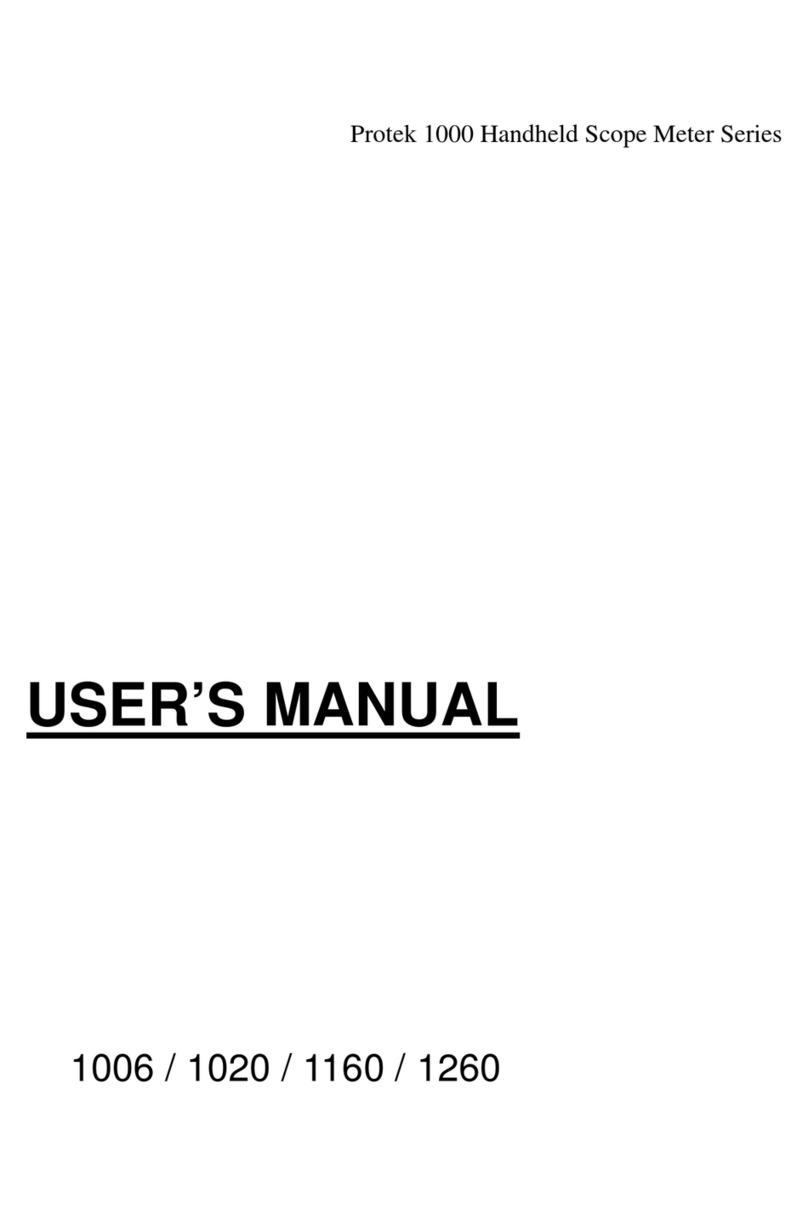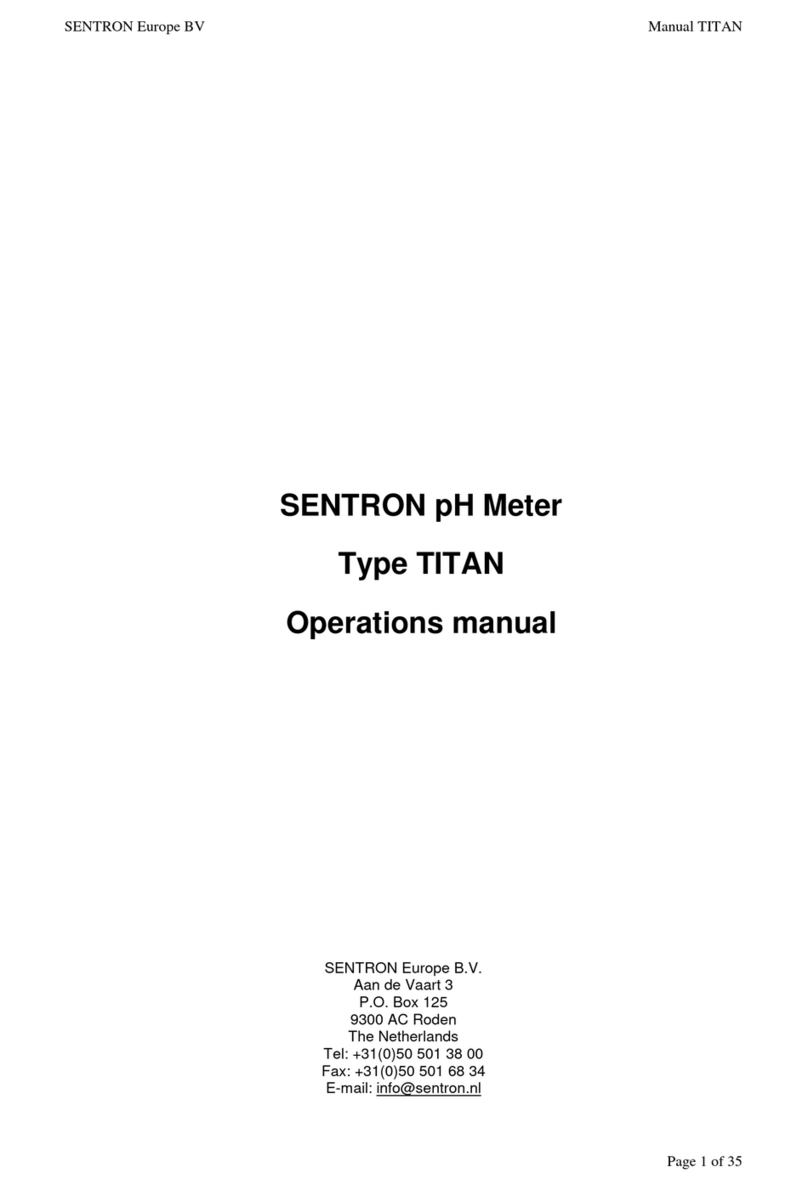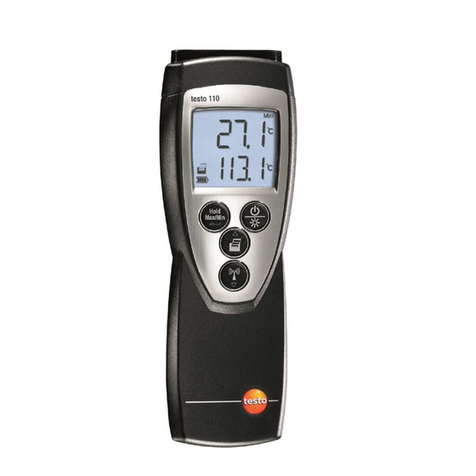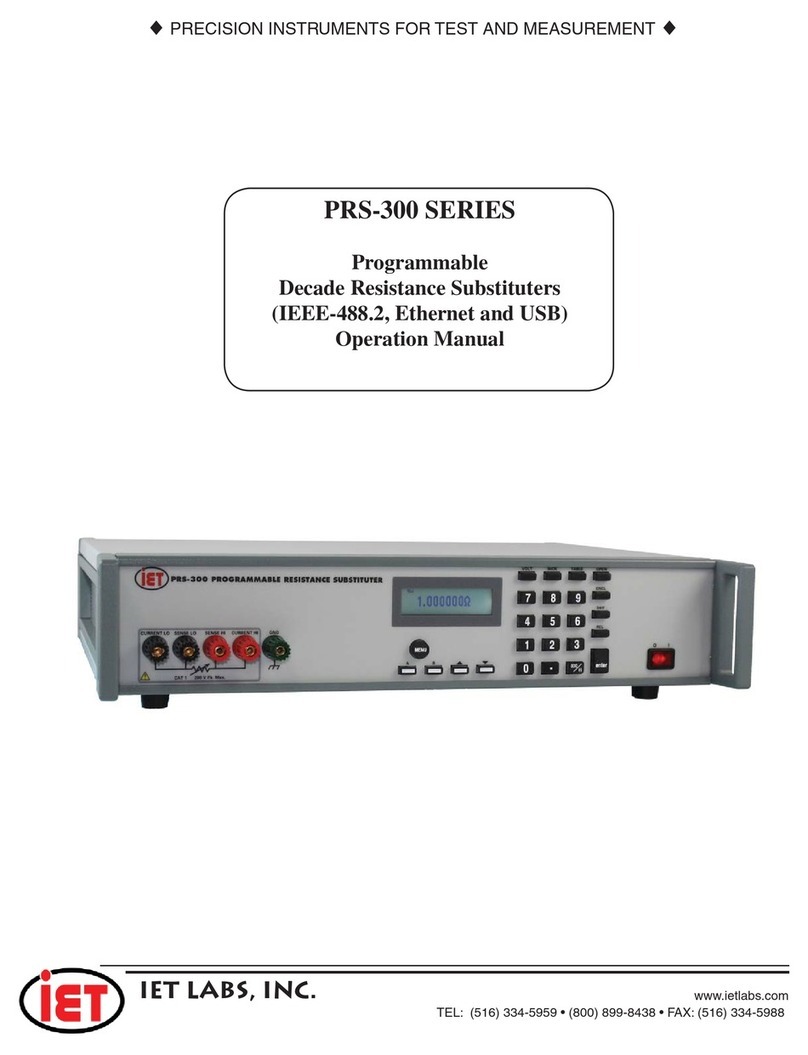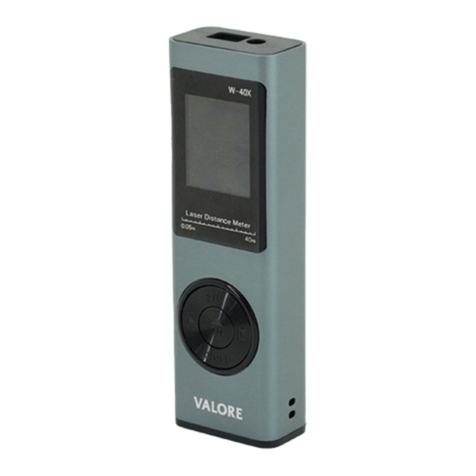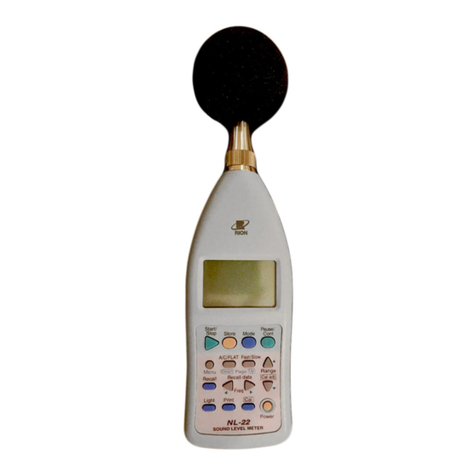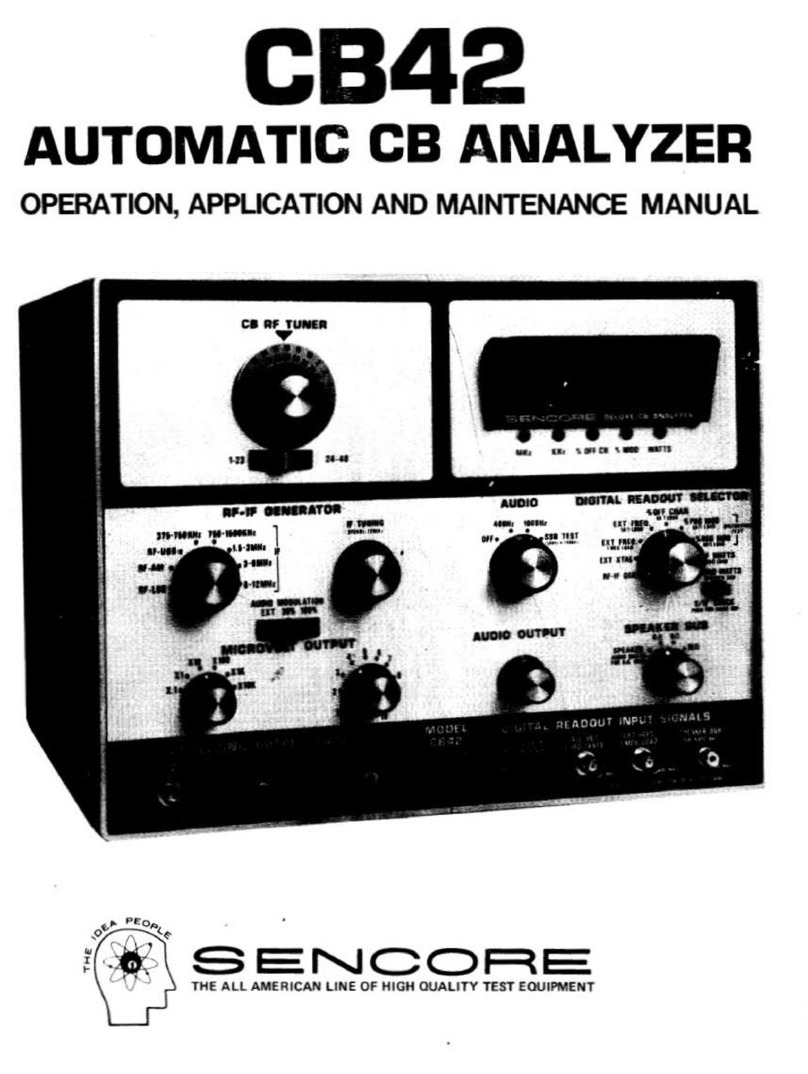
High Accuracy, Wide Range LCR Meter
Z9216
SPECIFICATIONS
30
Measured Components
L (inductance)
C (capacitance)
R (resistance)
Measured Circuit Configurations: series and parallel
Measurements
Resistance
Measured Parameter: R + Q
Measurement Ranges: R: 0.0001 Ωto 2000 MΩ
Q: 0.00001 to 50
Inductance
Measured Parameter: L + Q
Measurement Range: L: 0.0001 µH to 99999 H
Q: 0.0001 to 50
Capacitance
Measured Parameters: C + D and C + R
Measurement Range: C: 0.0001 pf to 99999 µF
D: 0.00001 to 10; R: 0.00001 KΩto 9999 KΩ
Display: Values, % deviation, or bin number
Test Environment
Test Frequencies: 100Hz, 120Hz, 1kHz, 10kHz and 100kHz
Frequency Accuracy: #±100 PPM
Drive Voltages: Fixed: 0.10, 0.25, 1.0 V RMS;
Vernier: 0.1 to 1.0 V RMS (50 mV resolution)
Drive Voltage Accuracy: ±2%
Measurement Rates:
(For test frequencies of 1kHz or greater):
Slow: 2 measurements/Sec
Medium: 10 measurements/Sec
Fast: 20 measurements/Sec
(For test frequencies of 100Hz and 120Hz):
Slow: 0.6 measurements/Sec
Medium: 2.4 measurements/Sec
Fast: 6 measurements/Sec
Bias Voltage: Internal: +2.0 V DC ±2%;
External: 0 to +40 V DC
Input Protection: 0.25A/250V Fuse
Ranging: Auto or manual
Triggering: Continuous, manual or remote (from the RS-232,
GPIB or handler interface)
Measurement Accuracy
Basic Accuracy: ± 0.2% with the following conditions:
1. An ambient temperature of 23°C ±5°C after a 30 minute
warm up period.
2. The short and open Cal has been performed.
3. D < 0.1 for capacitance, Q < 0.1 for resistance and Q > 10 for
inductance.
The component value, measurement rate and frequency
determine the actual measurement accuracy. (See the user
manual).
Zeroing Correction: Open and short circuit compensation
Remote Operation: Interfaces: RS-232 (25 pin D female
conductor) Standard GPIB and Handler (25 pin D male
connector optional)
General Specifications
AC Voltage Input: 120/220 Volts
Frequency: 50/60Hz
Power Consumption: 20 Watts
Operating Temperature: 0 to 50°C at < 80% Relative Humidity
Size: 4.3" H × 14.3" W × 14.5" D
Weight: 18 lbs.
Supplied Accessories: Manual, Line cord, Axial lead adapter
Optional Accessories: GPIB and Handler interface, Kelvin
clips, SMD tweezers
0.2% basic accuracy
Wide measurement range over13 orders of magnitude
Store and recall 9 instrument setups
Measurement rates to 20 times per second
Test frequencies are 100Hz, 120Hz, 1kHz, 10kHz and 100kHz
Displays component value and Q or Dissipation factor
Averaging for 2 to 10 measurements
RS-232 and optional GPIB and Handler interface
Open and short circuit compensation for accurate zeroing
Easy to use and calibrate
Built-in calibration procedures
Binning capabilities
K
K
K
K
K
K
K
K
K
K
K
K
Z9216
CE
Protek Test & Measurement
40 Boroline Road, Allendale, NJ 07401 Tel: 201-760-9898 Fax: 201-760-9888



















